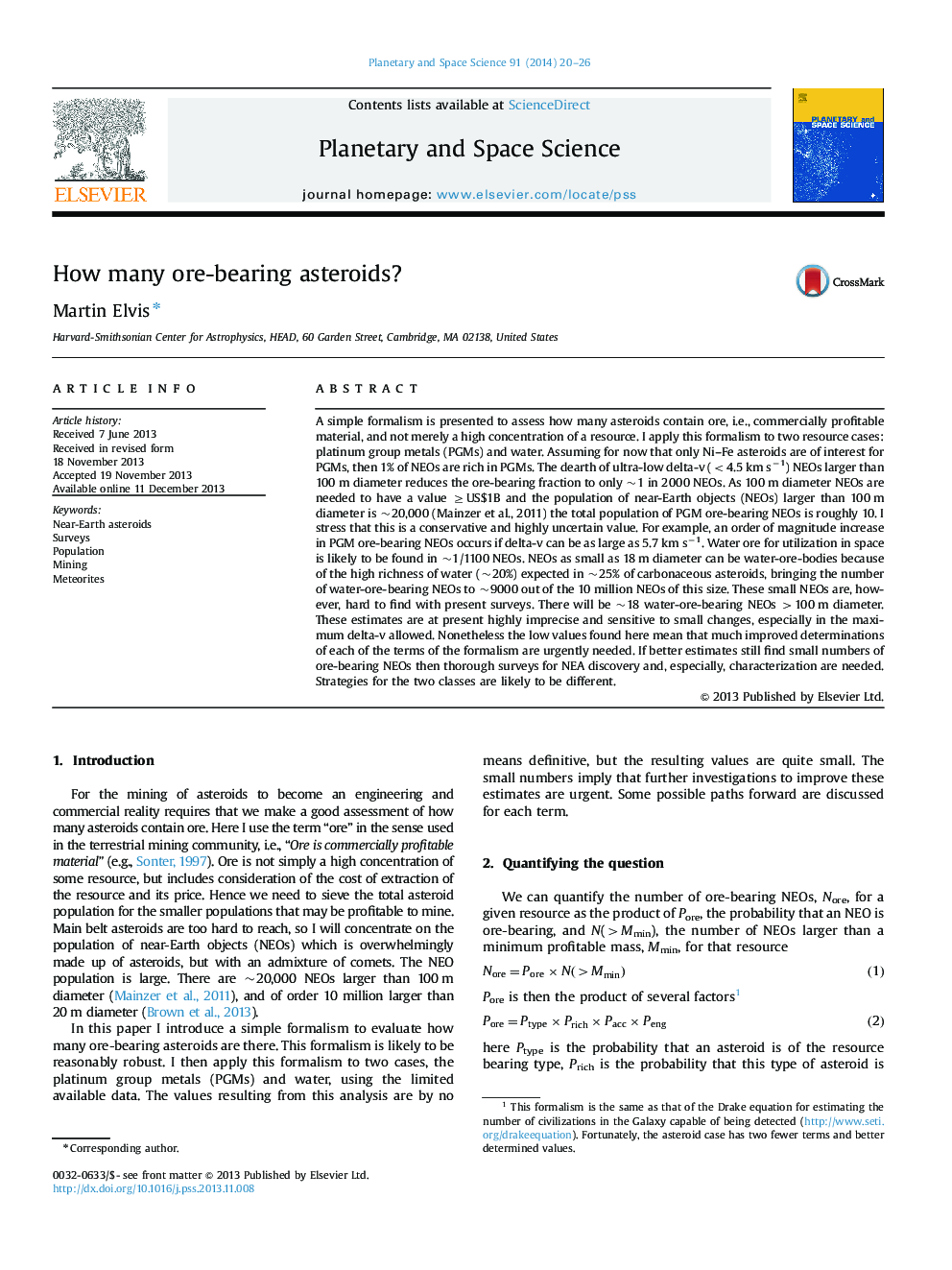| کد مقاله | کد نشریه | سال انتشار | مقاله انگلیسی | نسخه تمام متن |
|---|---|---|---|---|
| 8143856 | 1523945 | 2014 | 7 صفحه PDF | دانلود رایگان |
عنوان انگلیسی مقاله ISI
How many ore-bearing asteroids?
ترجمه فارسی عنوان
چگونه بسیاری از سیارک ها تحمل می کنند؟
دانلود مقاله + سفارش ترجمه
دانلود مقاله ISI انگلیسی
رایگان برای ایرانیان
کلمات کلیدی
سیارک های نزدیک به زمین، نظرسنجی، جمعیت معدن، شهاب سنگها،
موضوعات مرتبط
مهندسی و علوم پایه
علوم زمین و سیارات
فیزیک زمین (ژئو فیزیک)
چکیده انگلیسی
A simple formalism is presented to assess how many asteroids contain ore, i.e., commercially profitable material, and not merely a high concentration of a resource. I apply this formalism to two resource cases: platinum group metals (PGMs) and water. Assuming for now that only Ni-Fe asteroids are of interest for PGMs, then 1% of NEOs are rich in PGMs. The dearth of ultra-low delta-v (<4.5 km sâ1) NEOs larger than 100 m diameter reduces the ore-bearing fraction to only ~1 in 2000 NEOs. As 100 m diameter NEOs are needed to have a value â¥US$1B and the population of near-Earth objects (NEOs) larger than 100 m diameter is ~20,000 (Mainzer et al., 2011) the total population of PGM ore-bearing NEOs is roughly 10. I stress that this is a conservative and highly uncertain value. For example, an order of magnitude increase in PGM ore-bearing NEOs occurs if delta-v can be as large as 5.7 km sâ1. Water ore for utilization in space is likely to be found in ~1/1100 NEOs. NEOs as small as 18 m diameter can be water-ore-bodies because of the high richness of water (~20%) expected in ~25% of carbonaceous asteroids, bringing the number of water-ore-bearing NEOs to ~9000 out of the 10 million NEOs of this size. These small NEOs are, however, hard to find with present surveys. There will be ~18 water-ore-bearing NEOs >100 m diameter. These estimates are at present highly imprecise and sensitive to small changes, especially in the maximum delta-v allowed. Nonetheless the low values found here mean that much improved determinations of each of the terms of the formalism are urgently needed. If better estimates still find small numbers of ore-bearing NEOs then thorough surveys for NEA discovery and, especially, characterization are needed. Strategies for the two classes are likely to be different.
ناشر
Database: Elsevier - ScienceDirect (ساینس دایرکت)
Journal: Planetary and Space Science - Volume 91, February 2014, Pages 20-26
Journal: Planetary and Space Science - Volume 91, February 2014, Pages 20-26
نویسندگان
Martin Elvis,
